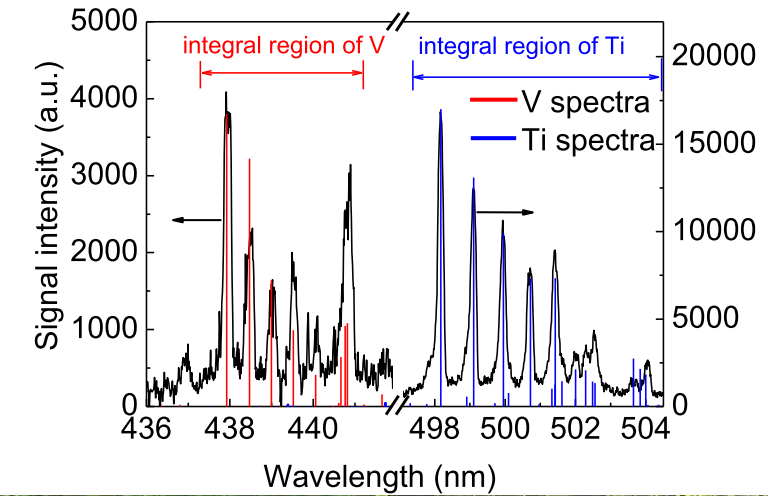- flame synthesis Position :Home -- Research -- flame synthesis
-
Diagnostic of V-Ti doping nanoparticle synthesis

Flame synthesis of V-doping TiO2 is studied by in-situ diagnostic of phase selective laser-induced breakdown spectroscopy (LIBS). We apply this novel optical spectroscopy to tracing the gas-to-particle phase transition of V and Ti species, as low-intensity laser only excites V and Ti present in the particle phase but not in the gas phase. Both V and Ti atomic signals appear early at the burner exit and plateau downstream after a distance about 14 mm. Compared with signals in pure Ti synthesis, the signal of Ti in the doping synthesis is significantly strengthened due to the lower band gap of V-doped TiO2. The doping mechanism is then inferred from the observations. It is deduced that the substantial collision and mixing of the nucleated V and Ti oxides occur even at burner rim and persist through the entire process. The signal intensities of both V and Ti increase with laser power and tend to the saturation value at about 20 mJ/pulse. In the saturation region, the ratio of V and Ti signal intensities is almost proportional to the doping ratio of V and Ti in the particle phase, showing feasibility of utilizing the optical method to measure the doping ratio.
Prev:SSF-made Pd@TiO2 Nano Catalysts[ Return ]
Next:Flame aerosol synthesis of nanostructured materials and functional devices: Processing, modeling, and diagnostics